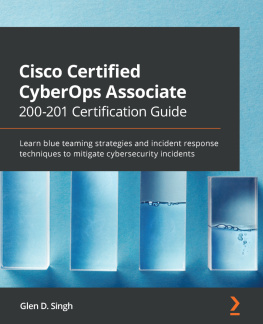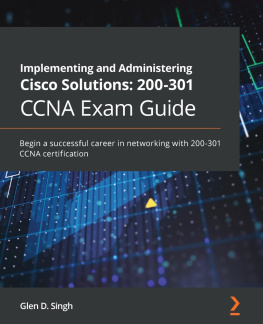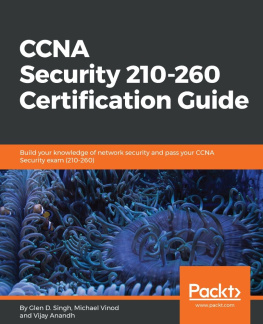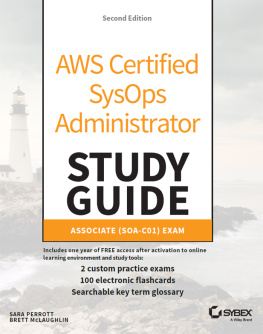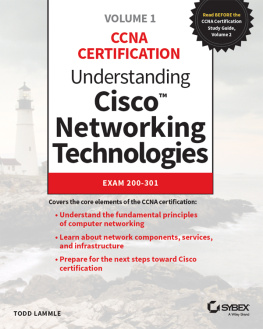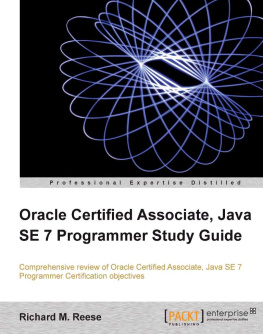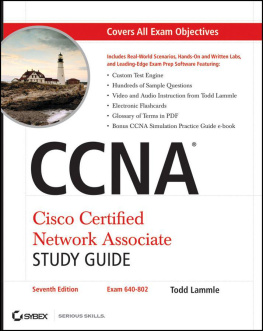Glen D. Singh - Cisco Certified CyberOps Associate 200-201 Certification Guide: Learn blue teaming strategies and incident response techniques to mitigate cybersecurity incidents
Here you can read online Glen D. Singh - Cisco Certified CyberOps Associate 200-201 Certification Guide: Learn blue teaming strategies and incident response techniques to mitigate cybersecurity incidents full text of the book (entire story) in english for free. Download pdf and epub, get meaning, cover and reviews about this ebook. year: 2021, publisher: Packt Publishing, genre: Romance novel. Description of the work, (preface) as well as reviews are available. Best literature library LitArk.com created for fans of good reading and offers a wide selection of genres:
Romance novel
Science fiction
Adventure
Detective
Science
History
Home and family
Prose
Art
Politics
Computer
Non-fiction
Religion
Business
Children
Humor
Choose a favorite category and find really read worthwhile books. Enjoy immersion in the world of imagination, feel the emotions of the characters or learn something new for yourself, make an fascinating discovery.
- Book:Cisco Certified CyberOps Associate 200-201 Certification Guide: Learn blue teaming strategies and incident response techniques to mitigate cybersecurity incidents
- Author:
- Publisher:Packt Publishing
- Genre:
- Year:2021
- Rating:5 / 5
- Favourites:Add to favourites
- Your mark:
Cisco Certified CyberOps Associate 200-201 Certification Guide: Learn blue teaming strategies and incident response techniques to mitigate cybersecurity incidents: summary, description and annotation
We offer to read an annotation, description, summary or preface (depends on what the author of the book "Cisco Certified CyberOps Associate 200-201 Certification Guide: Learn blue teaming strategies and incident response techniques to mitigate cybersecurity incidents" wrote himself). If you haven't found the necessary information about the book — write in the comments, we will try to find it.
Begin a successful career in cybersecurity operations by achieving Cisco Certified CyberOps Associate 200-201 certification
Key Features- Receive expert guidance on how to kickstart your career in the cybersecurity industry
- Gain hands-on experience while studying for the Cisco Certified CyberOps Associate certification exam
- Work through practical labs and exercises mapped directly to the exam objectives
Achieving the Cisco Certified CyberOps Associate 200-201 certification helps you to kickstart your career in cybersecurity operations. This book offers up-to-date coverage of 200-201 exam resources to fully equip you to pass on your first attempt.
The book covers the essentials of network security concepts and shows you how to perform security threat monitoring. Youll begin by gaining an in-depth understanding of cryptography and exploring the methodology for performing both host and network-based intrusion analysis. Next, youll learn about the importance of implementing security management and incident response strategies in an enterprise organization. As you advance, youll see why implementing defenses is necessary by taking an in-depth approach, and then perform security monitoring and packet analysis on a network. Youll also discover the need for computer forensics and get to grips with the components used to identify network intrusions. Finally, the book will not only help you to learn the theory but also enable you to gain much-needed practical experience for the cybersecurity industry.
By the end of this Cisco cybersecurity book, youll have covered everything you need to pass the Cisco Certified CyberOps Associate 200-201 certification exam, and have a handy, on-the-job desktop reference guide.
What you will learn- Incorporate security into your architecture to prevent attacks
- Discover how to implement and prepare secure designs
- Identify access control models for digital assets
- Identify point of entry, determine scope, contain threats, and remediate
- Find out how to perform malware analysis and interpretation
- Implement security technologies to detect and analyze threats
This book is for students who want to pursue a career in cybersecurity operations, threat detection and analysis, and incident response. IT professionals, network security engineers, security operations center (SOC) engineers, and cybersecurity analysts looking for a career boost and those looking to get certified in Cisco cybersecurity technologies and break into the cybersecurity industry will also benefit from this book. No prior knowledge of IT networking and cybersecurity industries is needed.
Table of Contents- Exploring Networking Concepts
- Exploring Network Components and Security Systems
- Discovering Security Concepts
- Understanding Security Principles
- Identifying Attack Methods
- Working with Cryptography and PKI
- Delving into Endpoint Threat Analysis
- Interpreting Endpoint Security
- Exploring Computer Forensics
- Performing Intrusion Analysis
- Security Management Techniques
- Dealing with Incident Response
- Implementing Incident Handling
- Implementing Cisco Security Solutions
- Working with Cisco Security Solutions
- Real-World Implementation and Best Practices
- Mock Exam 1
- Mock Exam 2
Glen D. Singh: author's other books
Who wrote Cisco Certified CyberOps Associate 200-201 Certification Guide: Learn blue teaming strategies and incident response techniques to mitigate cybersecurity incidents? Find out the surname, the name of the author of the book and a list of all author's works by series.

